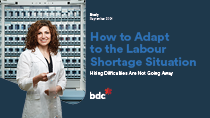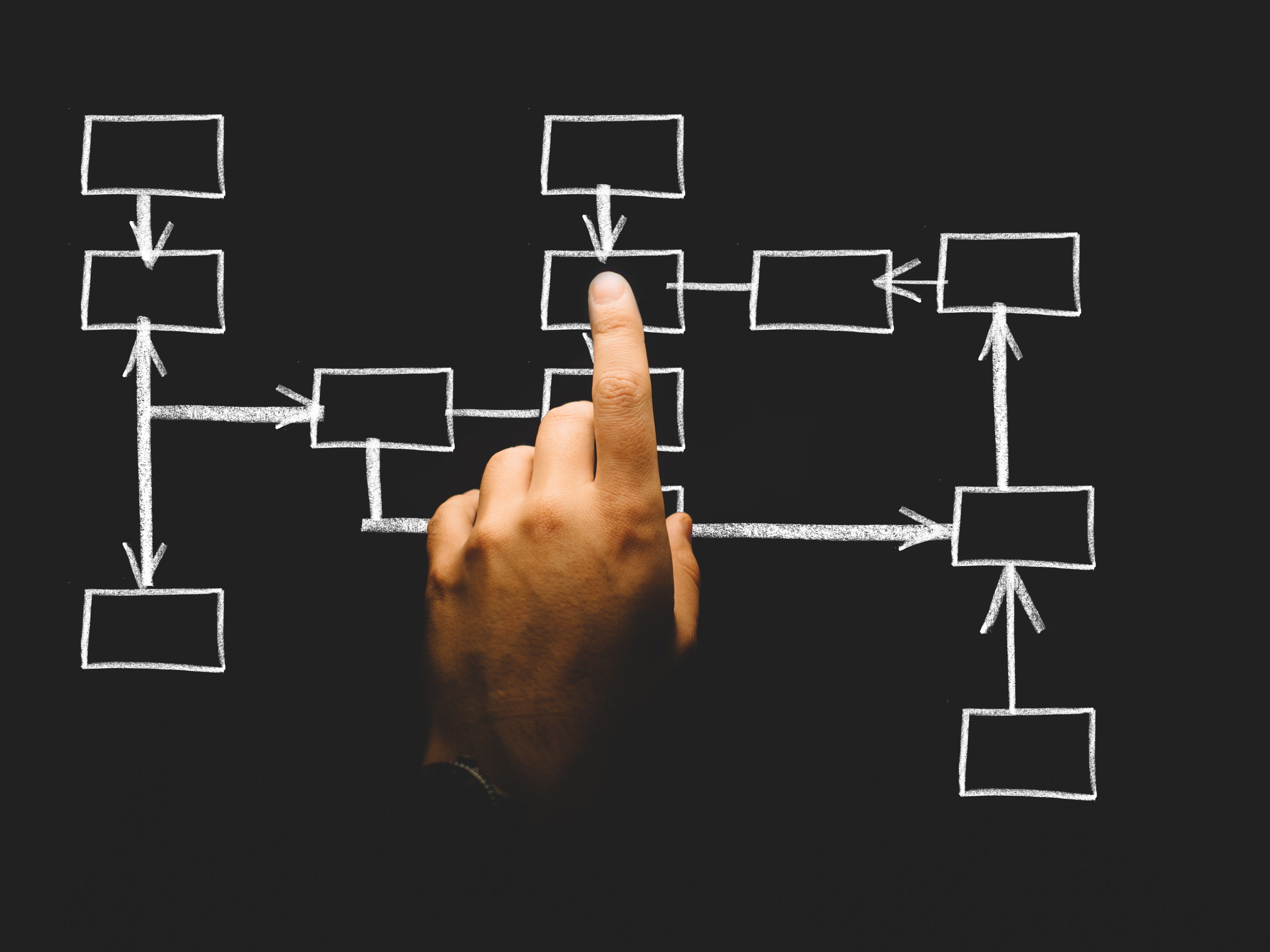This way to SaaS: How to increase the value of a tech company
BDC
If your company sells software with perpetual licences, I have good news for you. Not only could the SaaS model apply to you—it could also make your company gain value in the long run.
Every entrepreneur needs to think about an exit strategy, so if your strategy is to find a buyer within the next decade, you’d better move quickly to the SaaS model.
Beyond increasing value, transforming your business into a SaaS could open up additional capital sources that will help you grow more quickly. All without the need to bring in outside investors who would dilute your ownership.
How to begin transforming my business into a SaaS?
Now it’s time for the bad news: You usually lose money at first when transforming your business to the SaaS model.
Indeed, the SaaS model may involve major invoicing and product changes to make your product easy to install and use.
First, the invoicing change is one of the most difficult concepts to accept for many potential SaaS companies. Instead of billing one large amount after closing a sale, you will have to bill small amounts each month.
This approach could negatively impact cash flow in the short run. Indeed, each sale will take longer to become profitable for your company. Yet this strategy can help your business become more lucrative in the long run as it makes it easier to acquire new customers.
I have seen my share of SaaS transformations. All of them went through the same initial trough, a period of 12 to 36 months during which they held their breathbefore their first cohort of subscribers became profitable.
I have seen my share of SaaS transformations. All of them went through the same initial trough, a period of 12 to 36 months during which they held their breathbefore their first cohort of subscribers became profitable.
Second, the vast majority of SaaS companies sell turnkey—plug and play—software that require little technical effort to install.
You may therefore need to modify your software to make it easier to install and use. Given the current salaries of software developers, this modification could be a major expense. However, it should be seen as an investment.
Getting through the initial challenge
I have seen my share of SaaS transformations. All of them went through the same initial challenge, a period of 12 to 36 months during which they held their breath before their first cohort of subscribers became profitable. I like to call this period “the valley of death.”
Single customer cumulative cash flow

By the time they came out of the “valley of death,” their SaaS model was launched. Their challenge was then to ensure that subscribers always outnumbered unsubscribers, to create a snowball effect on revenue.
And you? How will you succeed in making your first cohort of subscribers profitable? At what price? Until when? This is where you’ll need to understand certain key data.
3 key ratios for all SaaS businesses
The following key ratios are central to any SaaS project:
The average total lifetime value of customers (LTV)
LTV represents the profit you receive from a typical customer over your entire relationship. The more customers stay loyal with your application, the higher the LTV.
The average customer acquisition cost (CAC)
The customer acquisition cost (CAC) is the total cost of all marketing and sales activities required to find a customer and convert them into a paying client.
The churn rate
The churn rate represents the number of customers who cancel their subscription in a given period. This is an important indicator for understanding customer loyalty to your product. If a company has a high churn rate, its growth potential will be increasingly limited.
In general, a churn rate of more than 10% is not sustainable in the long run. It is therefore essential to adopt a rigorous customer loyalty strategy.
For more information on the main financial ratios that apply to SaaS companies and how to analyze them, I invite you to download our digital guide: Essential SaaS Metrics.
In search of the perfect blend
These ratios allow you to determine the viability of your model. It’s your dashboard. Always keep an eye on it.
As for the monthly price of your service, it will be determined by market research. A price that is too high will lose you customers, while a price that is too low could hurt your profitability.
Note here the stickiness factor, which will depend on the nature of your product. For example, a software service that is somewhat difficult to remove from your customers’ systems will make them reluctant to unsubscribe. They will have more to lose than to gain by leaving you. Good stickiness will minimize your churn rate. Consider this in your strategy!
Once you know your ratios and have set the right price, you achieve the snowball effect mentioned earlier. Unlike a service provider who has to find or re-engage customers every year, a SaaS company never goes back to square one. It just increases its revenue.
Mind you, I didn’t say it grows its profits.
Continually postponed profitability
Why doesn’t the SaaS model guarantee high profits? The fact is that, to counter the impact of churn, it is necessary to continually invest in customer development, the cost of which will be higher than the revenue generated by subscriptions during the first 12 to 36 months. The cycle will have to repeat itself over and over to drive up the company’s value.
Once you adopt a SaaS model, you will need to constantly keep an eye on your ratios to make sure that they remain favourable and that your company is becoming more valuable.
You can of course stop or slow down your customer development efforts at any time if your ambition is not to sell to the highest bidder but rather to secure long-term revenue. However, in the SaaS world, more up-to-datecompetitors can always take your place if you stop investing.
There is no shortage of buyers for growth models. SaaS services are popular with large businesses that may not have the agility to create them on their own but that are interested in integrating them into their expanded offering in a “turnkey” manner to increase value.
As I mentioned at the beginning of this article, the SaaS model will make your exit much more lucrative than traditional service delivery or software sales.
Comparison of the valuation of a SaaS and a “traditional” company
If your “traditional” revenue is $1.2 million a year with $180,000 in profit, the usual calculation for buyers is to offer you between four and six times the EBITDA, or $720,000 to $1.08 million. When the time comes to sell your business, that’s what will be left to finance your next project or retirement.
The same company that was valued on profits will be valued on total revenue once it moves to the SaaS model. It will meet the same market need with the same type of service, but it will be worth much more.
The same company that was valued on profits will be valued on total revenue once it moves to the SaaS model. It will meet the same market need with the same type of service, but it will be worth much more.
In recent years, SaaS company values have been soaring to between six and 12 times their annual recurring revenue. These multiples are frequently seen in Canada, regardless of the sector of activity.
Continuing with our example, we can estimate that the company’s recurring revenues would initially be lower. Let’s say the revenues would be between $250,000 and $300,000. The company could therefore have a theoretical resale value of 1.5 to 3.6 million dollars!
The same company that was valued on profits will be valued on total revenue once it moves to the SaaS model. It will meet the same market need with the same type of service, but it will be worth much more.

Find the right partners
Convinced? Before moving forward, remember those cash flow issues.
If you don’t have the means (or the nerves) to finance your business for the year or two it will take to develop your customer base and your SaaS product (programming, creating a team, etc.), then you will need to find the right partners.
At BDC, we have helped many companies make the leap to the SaaS model. We usually step in once their digital platform is up and running and they start to develop their new customer base.
In addition to financing the initial revenue trough, we are used to dealing with ratios and carrying out market research. This way, we help you define the right long-term positioning from the outset.
If your company is in its infancy in the tech ecosystem, we can introduce you to professionals and other industry players who can help you take off.
Next sectors for SaaS
You may be thinking, “My industry isn’t ready for this.” My answer is that the best opportunities lie in the sectors that move the least.
In industries where the SaaS model is more prevalent, such as financial services, there is less room for newcomers than in fields like construction, insurance or healthcare.
Wherever delivery models have remained unchanged for decades, that is where the next SaaS success stories will emerge.
If you are thinking of taking the leap, do not hesitate to contact us.
Read the original article here
Check out their profile on CollabHub here
.png?width=600&height=187&name=Untitled%20design%20(2).png)


